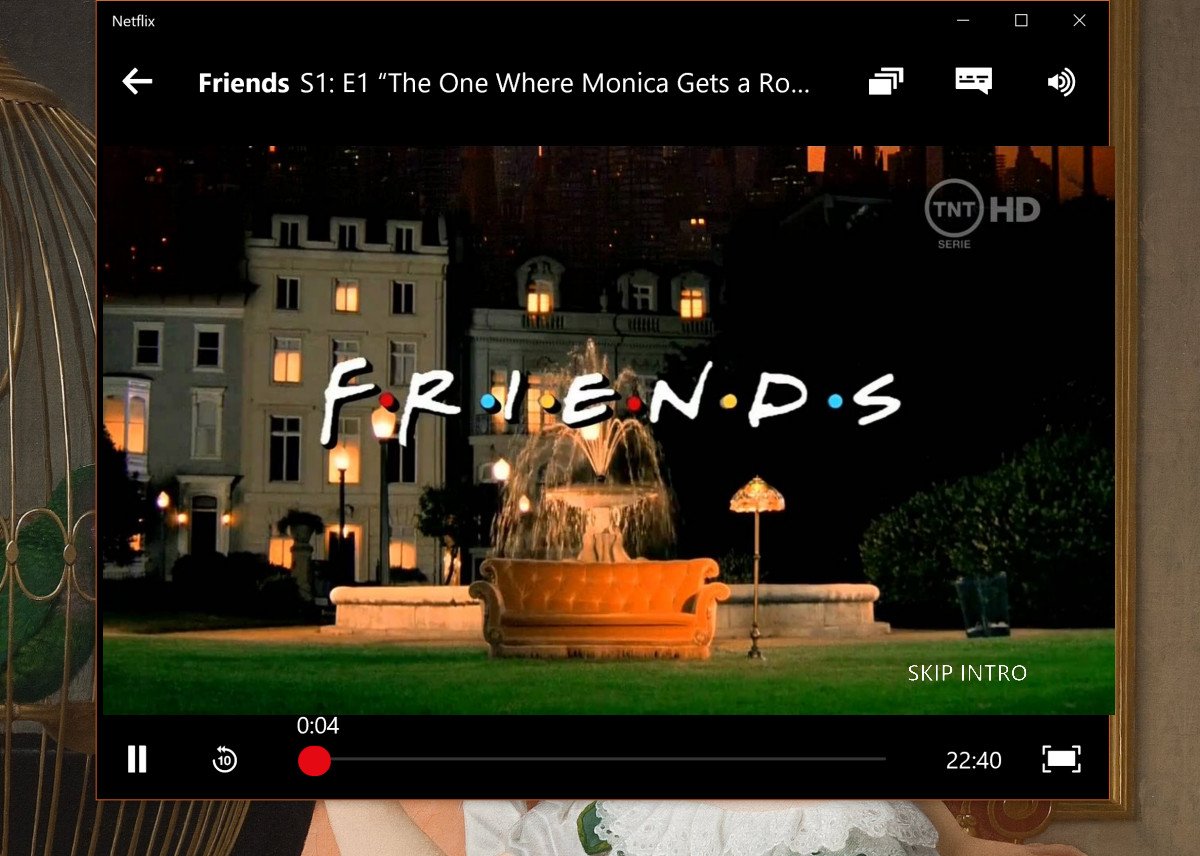Windows 10 Updating Every Day
”Stroking her chin pensively, Severia looked distant as Nirevel nervously approached Freyja, who continued to fidget and glare with unbridled hatred.“Err hi there Freyja are they treating you well?”“mfmfg!  But you had to know they’ve been very hard on, on you know. MFFGHGH!”“I-I’m sorry they captured you this way.
But you had to know they’ve been very hard on, on you know. MFFGHGH!”“I-I’m sorry they captured you this way.
Windows Update has seen a lot of changes on Windows 10. The biggest is a more aggressive approach to getting everyone up-to-date, but Windows 10 will also use BitTorrent-style peer-to-peer downloads for updates.
Is it correct that my PC has updates every day? I find when I switch my computer off at night virtually every time there are automatic updates. I assumed (wrongly) at first that the updates were failing but after checking it seems that they are workingand have downloaded sucessfully.I dont sit and wait for them to finish as they seem to take forever and most nights it seems to say 2 updates although sometimes they are bigger.It just seems to me unlikely that so many updates would be required! I have spoken to others who also have their system set to download updates automatically and they only seem to have updates now and again and not every day like my PC.Does anyone know if there is a problem with this please? What are the (two?) KB numbers of the updates that Automatic Updates is attempting to install everyday?Not sure where I would find this information.

Windows 10 Updating Every Day Youtube
My PC is actually installing these updates but it seems strange to me that these seem to happen every day.They mainly seem to be security updates for Microsoft.Net Framework 4 Client.Help us help you: Start by reading this 'sticky' post. What information to post in the Windows Update forumAlso see. Suggestions for asking a question in help forums. Are KB2656351 and KB2600217 both listed in Installed Updates( not just Update History)?How about KB2789642 & KB2804576?BONUS QUESTION: Are you in the habit of using 'Registry cleaners' (e.g., Registry Mechanic; System Mechanic; RegCure; RegClean Pro; Advanced SystemCare; Registry Booster; McAfee QuickClean; AVG PC TuneUp; Norton Registry Cleaner; PCTools Optimiser; SpeedUpMyPC;PC Doctor; TuneUp Utilities; WinMaximizer; WinSweeper; Comodo System Cleaner; Advanced System Optimizer; CCleaner Registry Cleaner)? - Robear Dyer (PA Bear) Microsoft MVP (Windows Client) since October 2002.
PART ONE: Assuming you meant that they're listed separately as Security Update(s) for.NET Framework 4 Client Profile andExtended.See the ANSWER post in this thread =After running the REPAIR of.NET Framework 4 ( only!), reboot then run a manual check for updates and see if you can successfully install KB2789642 and/or KB2804576 now. 1PART TWO: REPOSTING = Are you in the habit of using 'Registry cleaners' (e.g., Registry Mechanic; System Mechanic; RegCure; RegClean Pro; Advanced SystemCare; Registry Booster; McAfee QuickClean; AVG PC TuneUp; Norton Registry Cleaner; PCToolsOptimiser; SpeedUpMyPC; PC Doctor; TuneUp Utilities; WinMaximizer; WinSweeper; Comodo System Cleaner; Advanced System Optimizer; CCleanerRegistry Cleaner)?1 As before, there may be separate updates for.NET 4 Client Profile and.NET 4 Extended. Robear Dyer (PA Bear) Microsoft MVP (Windows Client) since October 2002.
.Helpful resources.General rules. Follow. Keep it civil and on topic. Hey I saw the post about the Task Scheduler task.The solutions seem simple, but I'll have to wait for the next update to test if it works.A) Remove the Actions from the task in question (or malform the task so it does nothing (add an argument?))B) Find (or figure out how to create) a user that does not have restart permissions and assign the task to that user.Of course there is the possibility that every time that windows update runs it recreates the task from scratch which bones my ideas, but I'm hoping that's not the case.I'm not giving up yet though.
I doubt this can be done but maybe we can remove the SYSTEM user's permission from MusNotification.exe?. Nevermind, WU definitely recreates the task.BUT, the following did work for me (TRY AT YOUR OWN RISK, I TAKE NO LIABILITY IF YOUR SYSTEM BECOMES UNUSABLE):Open up C:Windowssystem32Right click on 'MusNotification.exe'Go to 'Properties'Go to 'Security' tabClick 'Advanced'At the top you'll see 'Owner: TrustedInstaller' with a link to 'Change' it. Click the 'Change' link.Type in your username and press Check Names. It should underline your username (and possibly prepend it with your machine name) if it finds it.
If it doesn't, you'll need to figure out your username and make sure you get this part right.Press 'OK'. Dismiss any warnings or alerts.Press 'OK' until ALL DIALOGS ARE DISMISSED (DO NOT APPLY PERMISSIONS YET).Re-open the properties of MusNotifications.exe and go to the 'Security' tab (seriously it's important that you REOPEN it after changing the owner).Click 'Edit.'
Click on 'SYSTEM' in the list of 'Group or user names'Click on the 'Deny' checkboxes for 'Read & execute' this should also automatically 'Deny' for 'Read', if not then do so yourself.Click Ok to dismiss the dialog again.Go back into the properties for MusNotification.exe and go to the 'Security' tab.Click 'Advanced'Click on 'Change' beside the 'Owner' again.Type in 'NT SERVICETrustedInstaller' and click 'Check Names'Press OK.Keep pressing OK until all dialogs are dismissed. HOLY CRAP THANK YOU!!! I am so sick of my VMs crashing because my PC rebooted overnight. I've searched everywhere trying to end this crap, and until now it's always one of three things:.Dimwits who painstakingly explain that you can schedule automatic reboots, because that's totally the same as disabling them.Changing the Group Policy setting.

While the setting is there, it doesn't do shit on Windows 10, so I don't know why people act like it fixes anything.And a big fuck you to the blithering idiots who think it's the 'correct' behavior, and everyone should either reboot every other day or put up with randomly losing all their open programs.Thanks again for both understanding the problem and finding an actual working fix. The only change I have is that I had to use 'NT ServiceTrustedInstaller'; the all-caps version didn't work for me. Type Policy into start and it should come up with 'Edit Group Policy' (can also type gpedit.msc).In the left panel, under Computer Configuration, choose Administrative TemplatesWindows ComponentsWindows Update.On the right look for 'Configure Automatic Updates', double click. In the new window select Enabled, then at the bottom select option 2 (Notify for download and notify for install) from the drop down list. Apply and OKThere is another option on the right panel called 'No auto-restart with logged on users for scheduled automatic updates installations' I enabled this just in case, although it might not be necessary it also doesn't hurt.Edit: Forgot to add, I think you have to restart for these to take effect. Then in windows update settings you will notice it now says at the top 'Some settings are managed by your organisation' and the drop down list will be greyed out. I just had another one today.
I started rendering yesterday. Today I went out for a beer (rendering was at 70%) and came home to a beautiful login screen. That's how I got here.Well, seeing how there has been no development in this matter since the last time I looked into it and how the only solution still seems to be completely disabling updates (something I am not willing to do), I guess I'll have to explore my idea of creating a scheduled task which will periodically look for and remove the Reboot scheduled task created by Update Orchestrator.
I really don't like this idea because it feels terribly silly to have two programs constantly fight each other like that but at this point I can think of nothing else. Previously, on win8.1 it worked like this:. windows downloads updates automatically. windows installs them automatically. those updates that required restarts finishes on my next manual restart.This is what I want.Even if I don't use my device, I might up downloading something, or maybe a game I'm playing is paused, but still running, etc.
It could be anything. And when my pc restarts it don't start again until I unlock the encrypted hdd with a password. So even if something could technically be set to start again when pc reboots, it will not happen until I'm there and unlock the drives.Also, another scenario. Maybe I'm on vacation, and my pc is in a network with a few people. It needs to be on for those people to access my files.It's incredible if there's actually NO way to do this. Nothing in the registry?
Other less visible settings? Or perhaps I should ask over at?. The goal is to disable the automatic restarts, not to kill Windows Update.Updates are good, restarts without user interaction are bad.
Do I have a server running? Did I leave something rendering and went out for a beer? Well, fuck me!
If I'm not there after new updates are installed to tell the computer not to restart automatically in a couple of hours, it is going down and there's nothing I can do about it short of crippling my security by completely killing Windows Update. This is absurd!. This is super clever. Redirecting hosts to point to yourself and never finding an update. Nothing else has worked for me. But I don't see why this wouldn't. Kudos to the blogger!This has been super frustrating as I'm running W10 on my server.
Serving out Plex, file shares, etc. Windows doesn't seem to care whether or not RDP users or other people are accessing services on the box.
Windows 10 Update Every Day 2018
It'll just randomly reboot. Couple that with Windows (and specifically W10) proclivity to hang/crash on restart and you have a not very effective OS for a server.